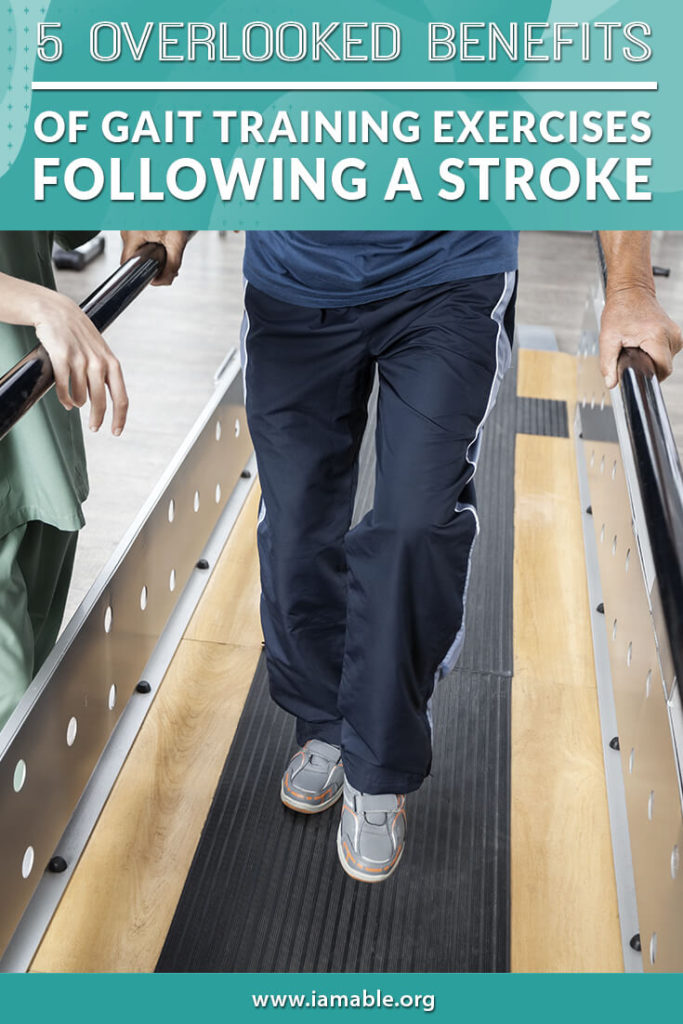Miami, FL 33186

A stroke can leave a patient with paralysis, paresis, balance problems, and difficulty walking. The results can make it challenging to maintain your independence. However, gait training exercises may provide exactly what you need to take care of yourself to the best of your ability. Let’s look at five frequently overlooked benefits of gait training exercises.
The number one benefit of gait training exercises is the ability to help a stroke patient walk again. While not every patient will receive this benefit, gait training can potentially help the body learn to walk again. You also need to build up your strength in order to stay on your feet for an extended period of time.
Building muscle mass plays a critical role in restoring the ability to walk. This is true even if you are just going from the couch to the bathroom. Gait training exercises can help you build that functional strength, even if you don’t have the ability to stand for very long at present.
While you may be able to get up on your feet and move about, you may struggle to walk normally after a stroke. Gait training exercises can help improve your ability to walk and make it more natural. Abnormalities in your gait can occur due to a combination of issues including reduced strength, inhibited motor control, and balance problems that have resulted from a stroke. Exercises can help with all of these concerns.
Gait training therapy reduces weakness that frequently arises for patients following a stroke. It can also cut back on the spasticity that occurs. As an added benefit, gait training can even help damaged nerves to get stronger, which is particularly important for stroke patients. As nerve strength improves, you get a little more control over the function of your legs, and that leads to more natural walking ability.
One of the significant challenges of regaining independence following a stroke occurs when the damage results in fall risk. You may not have the balance that you did before the stroke. Muscles that can no longer function to the full will quickly begin to atrophy, leading to a loss of strength. There are also visual impairments, cognitive changes, and slower reflexes to contend with depending on the extent of the damage caused by the stroke.
Becoming a fall risk usually results in someone needing to be present at all times. Therefore, gait training is a must if you want to maintain some degree of independence. Exercises can help to restore some of your balance, muscle strength, and muscle memory regarding your balance. Once you regain some of these functions, you may be at a lesser risk for a fall.
Balance exercises will be an essential part of your gait training. This type of physical therapy will help you to feel steadier on your feet. Again, the benefits of exercises that increase strength and restore nerve function will also provide you with a balance boost.
Sometimes the vestibular system (which controls balance) is at the heart of a balance issue. This requires a different kind of care. However, when the problem is in the bones, muscles, nerves, and even how these interact with the central nervous system, then exercise can help. Even when the issue is in your vestibular system, being physically steady on your feet will give you the best chance of avoiding a fall.
A stroke can take away the independence of an otherwise completely healthy person in mere minutes. Gait retraining exercises can help you to regain as much of that independence as possible. From building your strength to helping you balance yourself better, physical therapy will play a vital role in the process.
There are also incredible advances in technology that can assist a person restore more independence. Such machines include Lokomat therapy. In this therapy, a patient is suspended by a harness and strapped to an exoskeleton, which is on a treadmill. The therapist can determine how fast the treadmill moves and how much of the walking is done by the patient. The rest is performed by the exoskeleton, which exercises the muscles used for walking and provides a model for normal gait.
With this technology emerging, you can’t find it at every stroke recovery center. However, if you live in southern Florida, iAM ABLE uses this state-of-the-art technology to help patients recover from all sorts of injuries and neurological conditions. It may be just what you need to compliment your physical therapy sessions and optimize your level of independence following a stroke.
Whether you are living with paralysis that has been caused by a stroke, an injury, or a neurological condition, you need to learn how to cope with the new challenges that you face successfully. The book 7 Unbelievably Important Steps to Take to Thrive after Paralysis can help.
The book helps you every step of the way. From accepting your new circumstances to learning how to work within the constraints, you get the help needed to enjoy the best life possible rather than just surviving from day to day. When you know how to take care of yourself physically, mentally, and emotionally, you are ready to maintain a measure of independence and continue challenging yourself to reach the next milestone.
Grab our free e-book 7 Unbelievably Important Steps to Take to THRIVE after Paralysis by clicking the image below.
